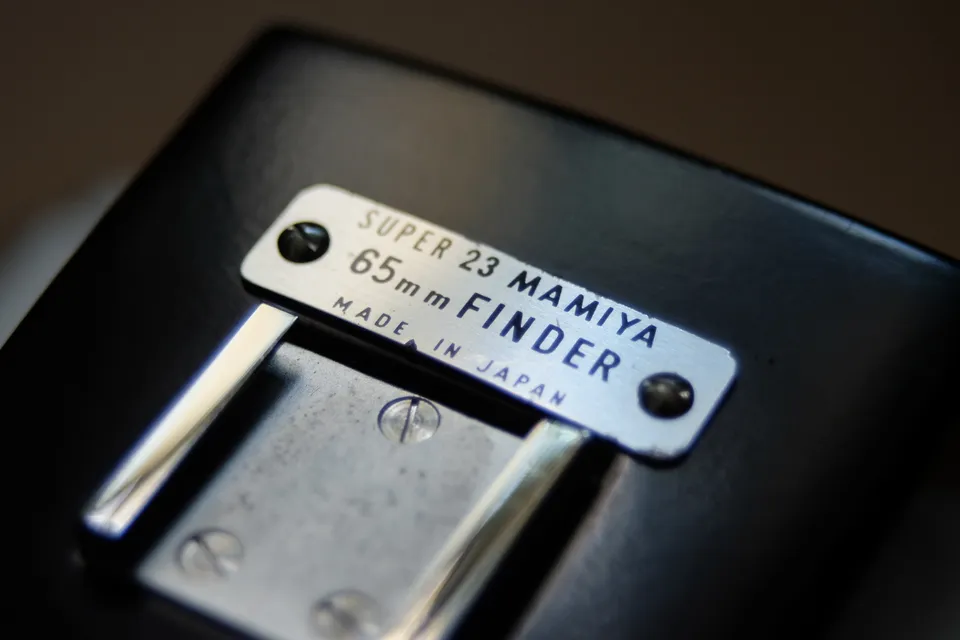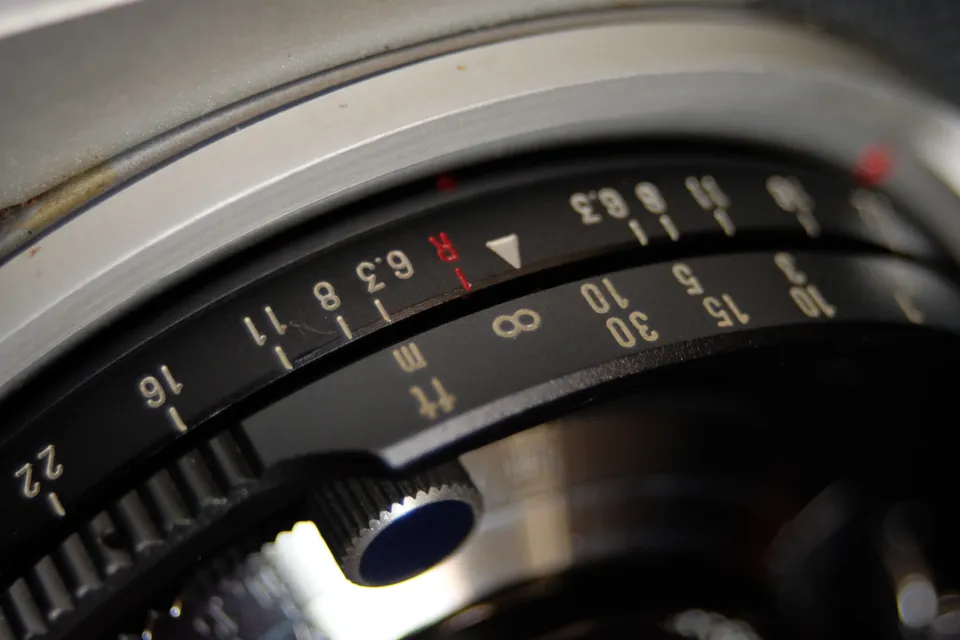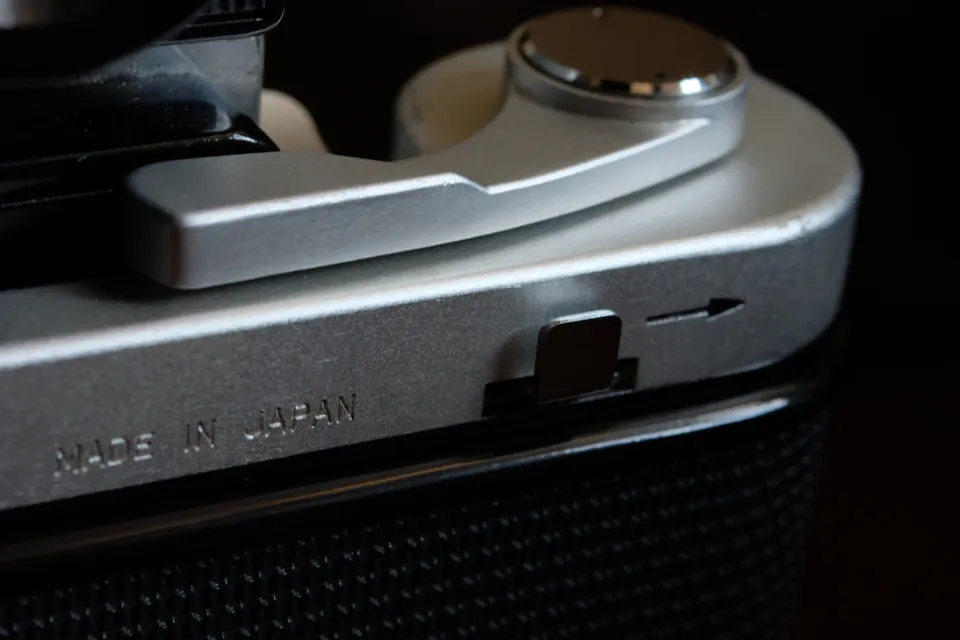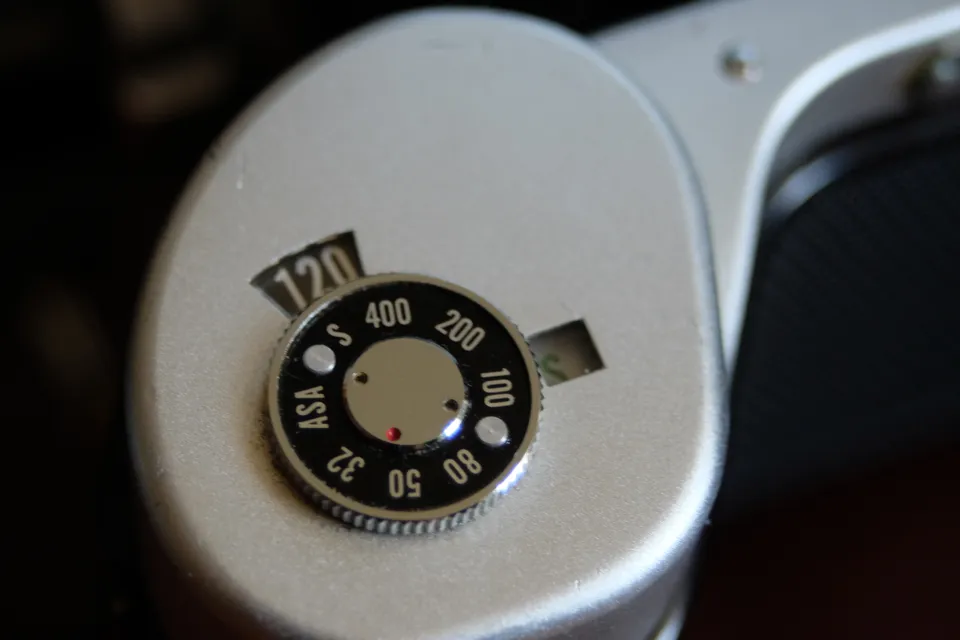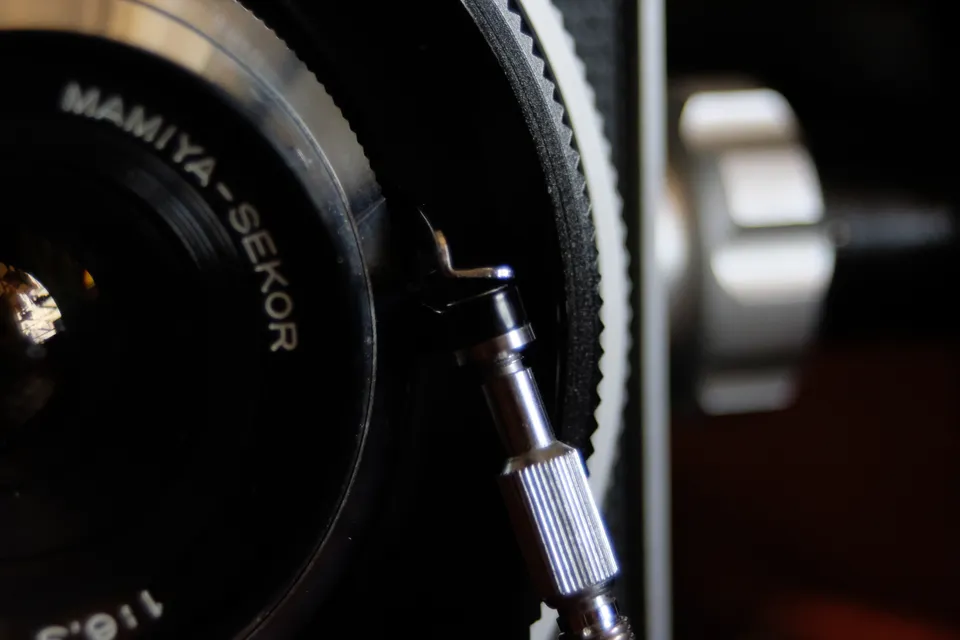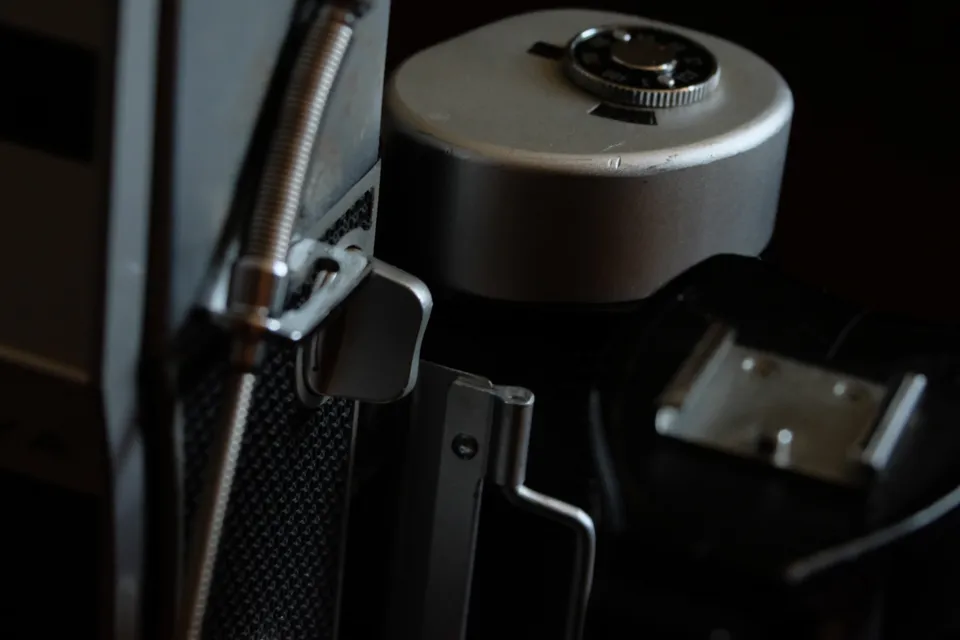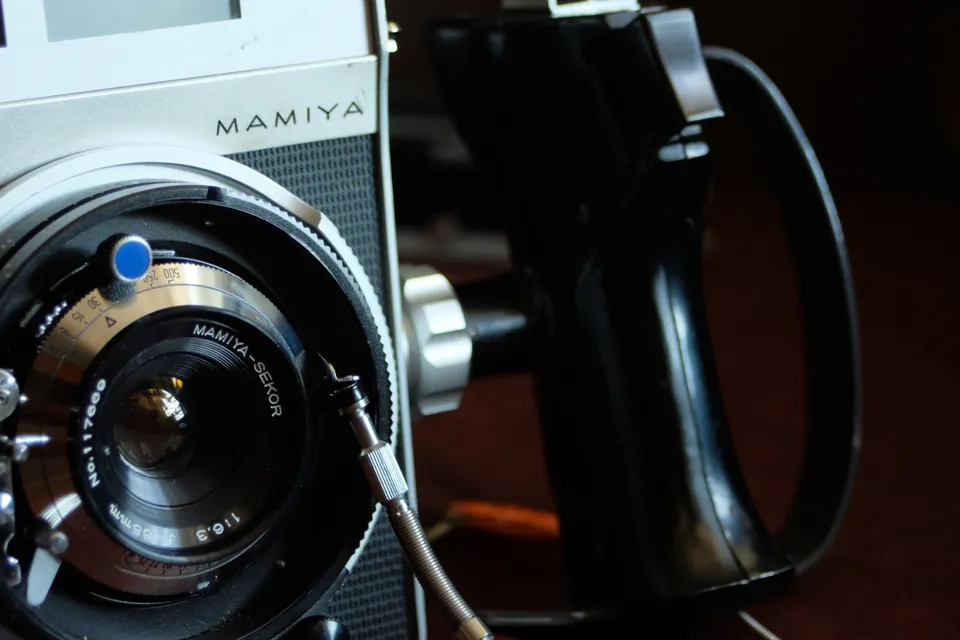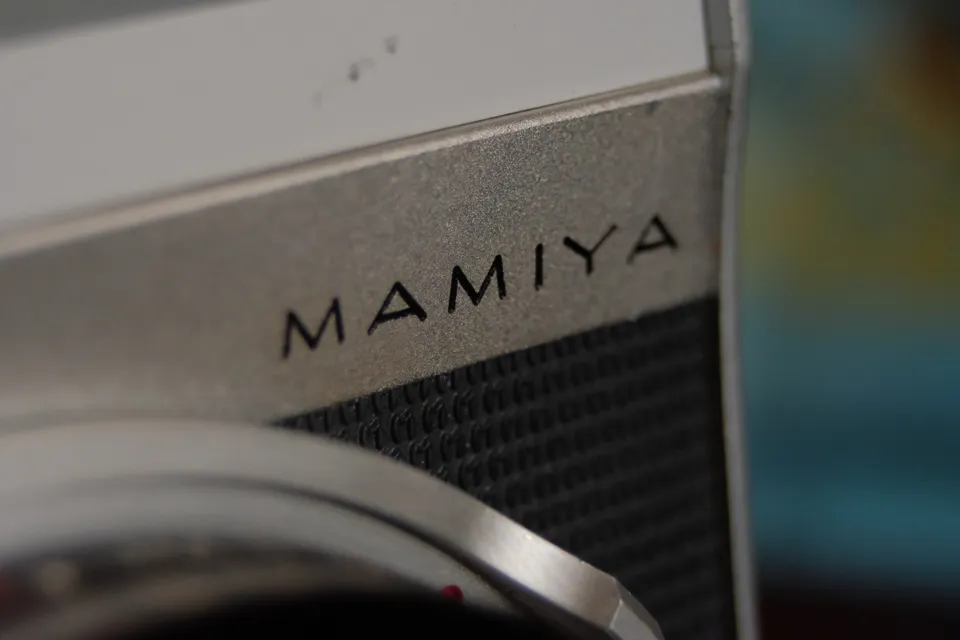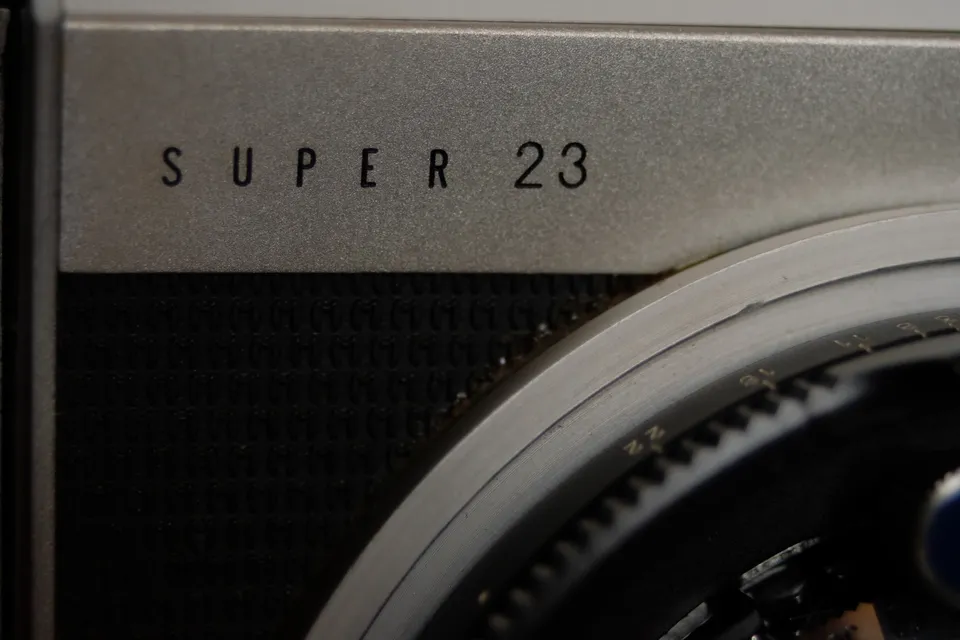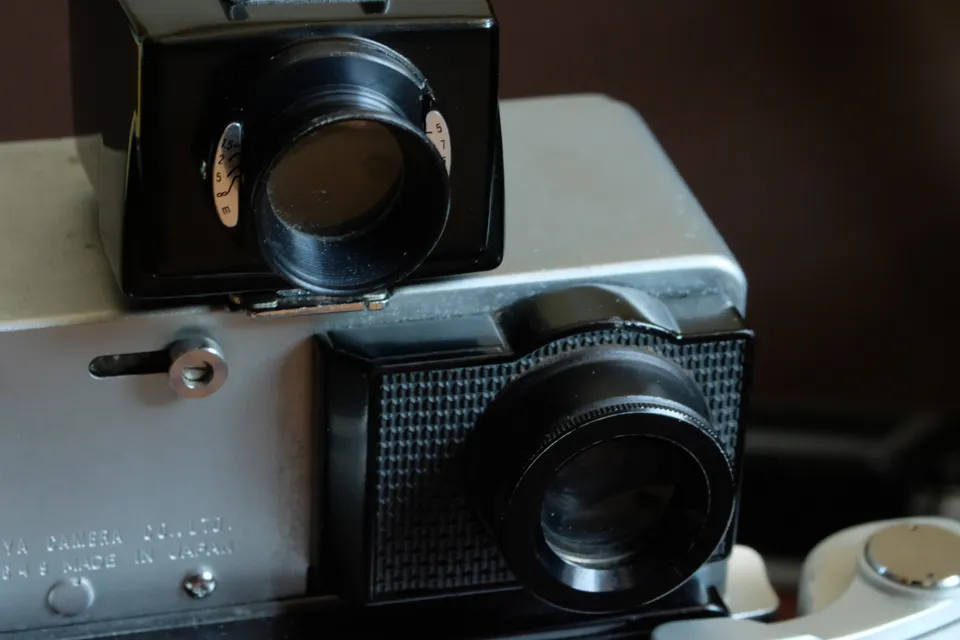Mamiya Press Super 23
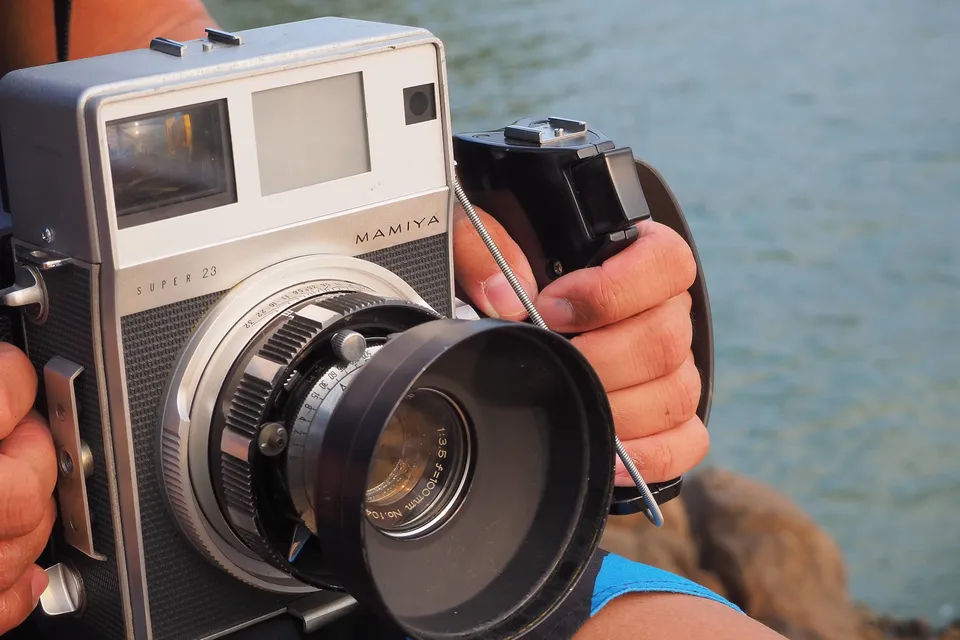
Some cameras can double as a dumbbell. The 2kg Mamiya Press Super 23 is more than qualified for this, and as the center piece of a flexible modular medium format camera system for studio and press use back in the 1960s.
As the name suggest, Super 23 is a Press camera that's designed for photojournalism. Note the hand grip on the side and rangefinder on top of the camera. This design and form factor is a descendant from the earlier press cameras such as the Speed Graphic by Graflex that shoots 4×5". Super 23 and its siblings such as the original Mamiya Press and Press Universal shoot 6×9 cm negative which is a step down from 4×5", allowing for a more portable form factor compared to its predecessors. Later, 35mm cameras and digital cameras had become mainstream for press photography.
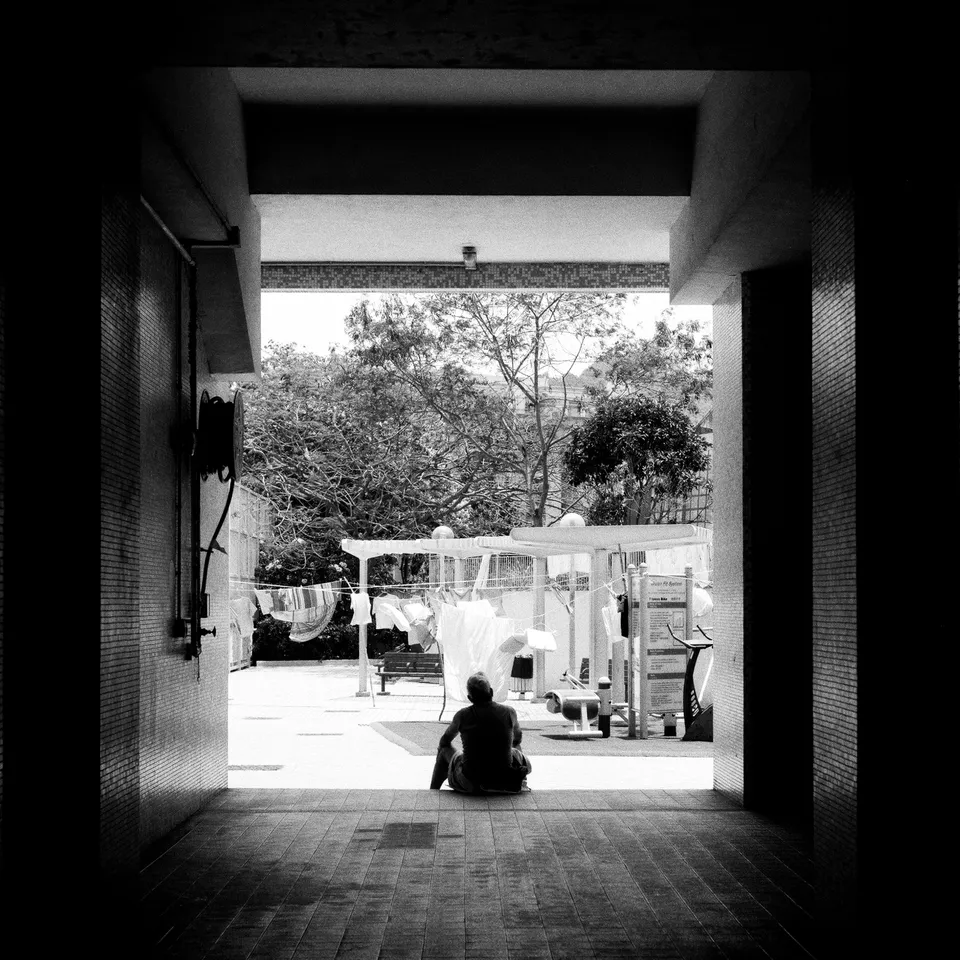
Most medium format cameras support one, sometimes two (Moskva-5 supports both 6x6 and 6x9), but rarely more than that. Mamiya Press, with its Model K film back, managed to support 3 sizes (6x4.5, 6x7, 6x9). Individual backs for 6x7, 6x9 and Polaroid also exist.
My first medium format camera is the Moskva-5, which shoots 6x9. The 6x6 mask had come missing so all I shot was 6x9, 8 shots per roll. With 6x7 I can get 10 shots, 6x6 12 shots, up to 16 shots on 6x4.5. With the rapidly rising film price I knew I wanted something that shoots smaller frame sizes to save money on the film.
Being a modular camera system, Mamiya Press was attractive to me with its selection of film backs and wide range of lenses (which, of course, is somewhat hard to collect). The tilting back mount would enable tilt shifting as well, something that I've always wanted to try.
When I saw the 2-year old listing on Carousell I wasn't alerted as I should've, I was thrilled. Soon I took home a Mamiya Press Super 23 in a suitcase, with 65mm f/6.3 and 100mm f/3.5 Mamiya-Sekor lenses and a 6x9 back. Cheap - but not much cheaper compared to other systems such as Mamiya RB67.
Slow shutter speed was dead on both lenses and there were bubbles on the edge of the 100mm lens. For outdoor shooting, the lack of slow shutter speed, along with the dirty and scratched lenses seemed acceptable once the cognitive dissonance kicked in.
Smell of a bad deal.
It didn't end there, I spent a bit more money later on a 6x7 back and a 150mm f/5.6 lens to "complete" the collection. After having spent so much money needlessly on parts with subpar quality I had to stop there.
For the money I've invested into Mamiya Press Super 23 I could have gotten a clean and working RB67 or Kowa Six, maybe a Fujica.
All the rants that I've had about this is not really about the camera, but its price compared to the cameras that I consider superior. There's no good reason to believe that until I've gotten my hands on any of those said cameras. So, ok, maybe Super 23 isn't bad on its own merits.
Before continuing, I recommend the informative Japanese site マミヤプレスファンクラブ (Mamiya Press Fan Club) if you can read Japanese. The site is filled with love towards the camera system that makes all my rants (up to and after this point) seem little and irrelevant, in all the good ways. In fact, I relied on that site to combat my cognitive dissonance resulting from having purchased my Super 23.
Not long after taming my cognitive dissonance, I began learning to love this camera, just like the owner of that fan club site did.
My copy of Mamiya Press Super 23 comes with a suitcase. The case is as rudimentary as a case goes. The material seemed to be hard boards wrapped in soft fake leather skins with foam paddings. The corners are protected by metal parts keeping the case sturdy while standing.
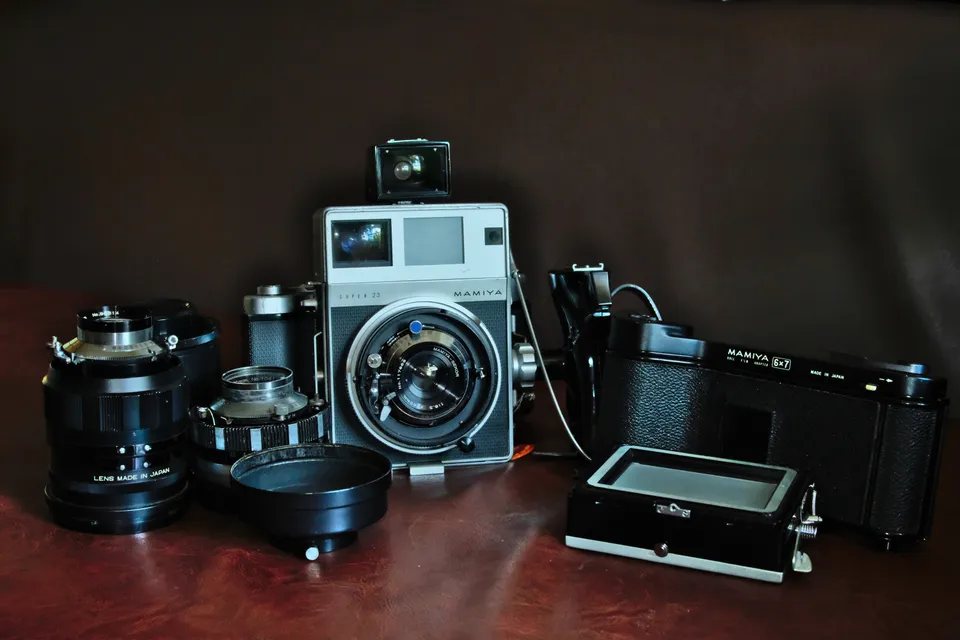
With careful packing I am able to put the camera body, 3 lenses, 2 film backs, an extension tube, a focusing screen and the hand grip inside. MATIA from Mamiya Press Fan Club demonstrated how the camera can be packed into a bag.
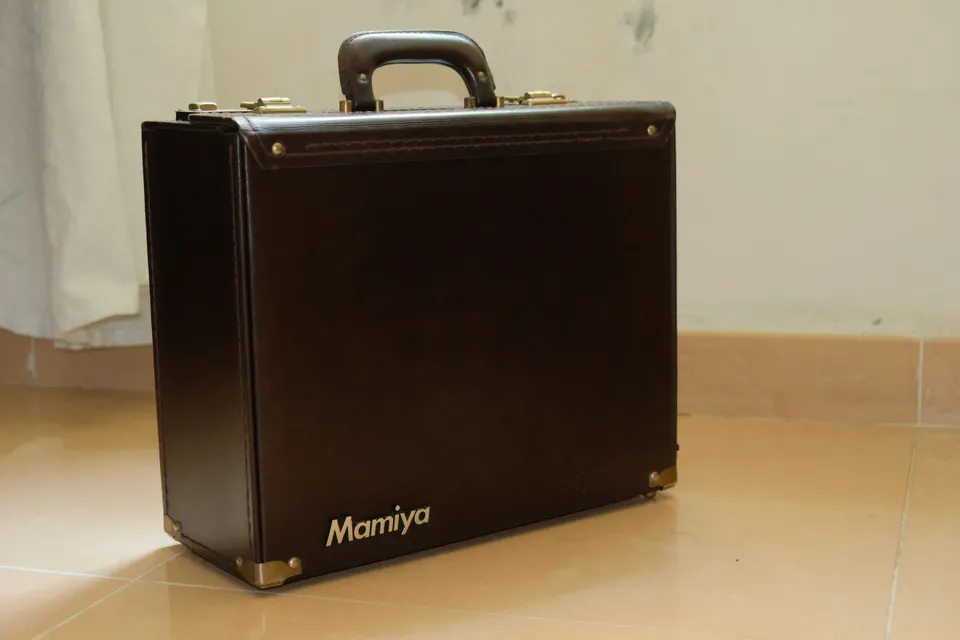
When I go out and shoot with my Super 23, I fill my backpack fully with at most 2 lenses, 2 film backs and the camera body assembly. There’s no room for water or snacks so only feasible for short trips. Optionally, a tripod may be hung below the bag. However my cheap lightweight tripod doesn’t have the strength to stay up under the load of a 2kg Super 23.
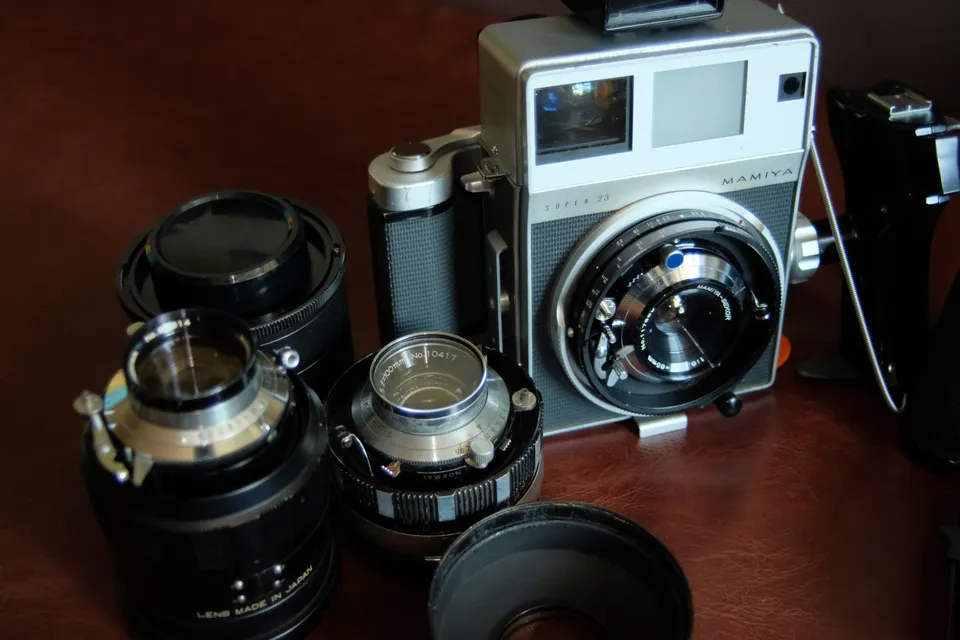
Ther 3 lenses I own are:
- Mamiya-Sekor 65mm f/6.3 (with viewfinder)
- Mamiya-Sekor 100mm f/3.5
- Mamiya-Sekor 150mm f/5.6
Mamiya Press Super 23 comes with 3 sets of frame lines for 100mm, 150mm and 250mm selectable via the slide button at the back. For other focal lengths, additional viewfinder can be attached at the top for framing.
There’s a split-image coupled rangefinder for the user to focus by turning the focusing wheel on the lens and aligning the yellow patch. As with many other 50+ years old cameras, the viewfinder is hazy and the yellow patch difficult to see. Someone tried fixing that yet I am not confident enough to do the same.
Because this is a rangefinder camera, expect parallax error when shooting in close range. In fact, the 65mm viewfinder accessory allows for parallax correction via shifting the finder up/down according to the distance from the subject.
The film backs and focusing screen are interchangeable at the back of the camera. Focusing screen is required when shooting macro photography with extension tubes or when enabling tilt-shift using the tilting back. This feature isn’t available in the later model Press Universal without additional accessories. I haven’t tried macro or tilt-shift effects yet but they seem quite cool to come out-of-the-box.
I have a 6x7 and a 6x9 film back. The frame lines for these sizes are built into the viewfinder. For Model K film back that also shoots 6x4.5, there are some push-on frame masks that go on the front of the viewfinder. Half-smart design because people tend to lose those and ask for ridiculous sums of money on online auction sites.
The lenses are attached from the front (obviously) and locked by turning an enclosing ring.
The effect of bubbles, scratches and dust inside the lenses are negligible. They are sharp enough. In fact, the only impact they pose is probably their re-sellability.
This is a bulk 2kg camera/dumbbell. Compared to the portable folders such as Moskva-5 and Semi Leotax, it’s difficult to persuade myself to bring this camera out. After some use my wrist begins to sore. While it is possible to hold the camera with both hands when the film back is attached, usually it’s just only my left hand. A strap would be bad news for my shoulder and neck which I plan to try at some point.
So far I have only managed to shoot 4 rolls of film on this camera, they all turn out ok, as sharp as they should, and as blurry as they should too, especially while holding the camera up for an extended period of time or when trying to capture the “decisive moment”. As the slow shutter speed of all these lenses are defective, I am forced to shoot everything at shutter speed 1/30 or faster, which indirectly helped avoiding camera shake that I keep getting on Moskva-5.
At that point in history film backs have long abandoned the red window and embraced automatic frame counting. By cranking the lever like a normal 35mm film camera, the frame is advanced until the crank locks up after arriving at the next frame. This is a useful feature as it’s now possible to shoot 135 film on these film backs without worrying about light leaks through the red window or overwinding from guesstimated film advance via by turning.
The detachable hand grip is an integral part of the camera. Without the grip, one has to hold the camera by the back and it puts a lot of pressure on the seemingly sturdy metal slots that hold the back in place. However, the film back is further away from the center of gravity at the front causing it rather hard to shoot. Therefore, it's necessary that the grip is attached when shooting with Super 23.
One can carry the camera while walking by hanging the camera by its grip.
Not only does the grip help holding the camera up, the built-in cable release also improves the ergonomics by limiting the movement required to trigger the shutter release. Shooting photos like a gun.
Sometimes I get lazy and just hold the camera on my palm and use my fingers to flick the shutter release on the lens.
Generally, the camera's center of gravity is on the front especially when longer lenses like 100mm or 150mm are attached. I have had at least 2 incidents of almost dropping the camera while holding it on one hand switching lenses. Both times I felt dumb.
Unlike medium format camera in the following eras, Mamiya Press is very versatile with multiple film back sizes from the typical 6×9, 6×7 to 6×4.5 with the Model K (and many hard-to-find film & viewfinder masks) and Polaroid back (only in Universal).
I managed to try both my 6×9 and 6×7 back. This camera is more suitable for studio and slow, well framed shoots because the camera is too heavy and slow to operate for the street scene compared to 35mm cameras. Perhaps this is true for many non-folding medium format cameras but it's especially the case for Mamiya Press.
The lack of a sturdy tripod contributed to my sparse use of the camera and my unwillingness to shoot the more expensive film such as Fuji Velvia 100 and Kodak Portra 160. At some point when I have bought a proper tripod, I will be thrilled to try out macro photography, parnorama, long exposure and infrared photography.
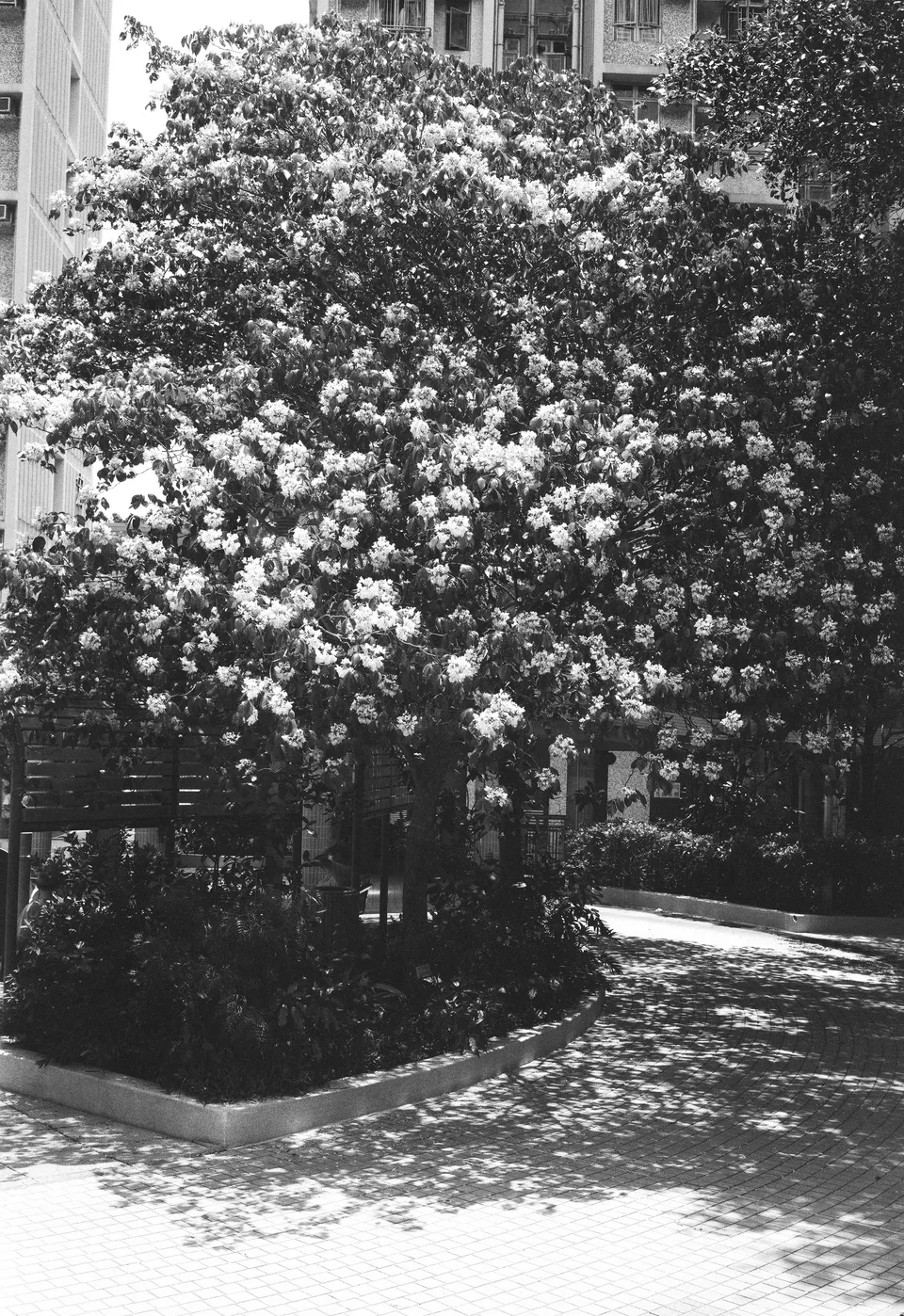
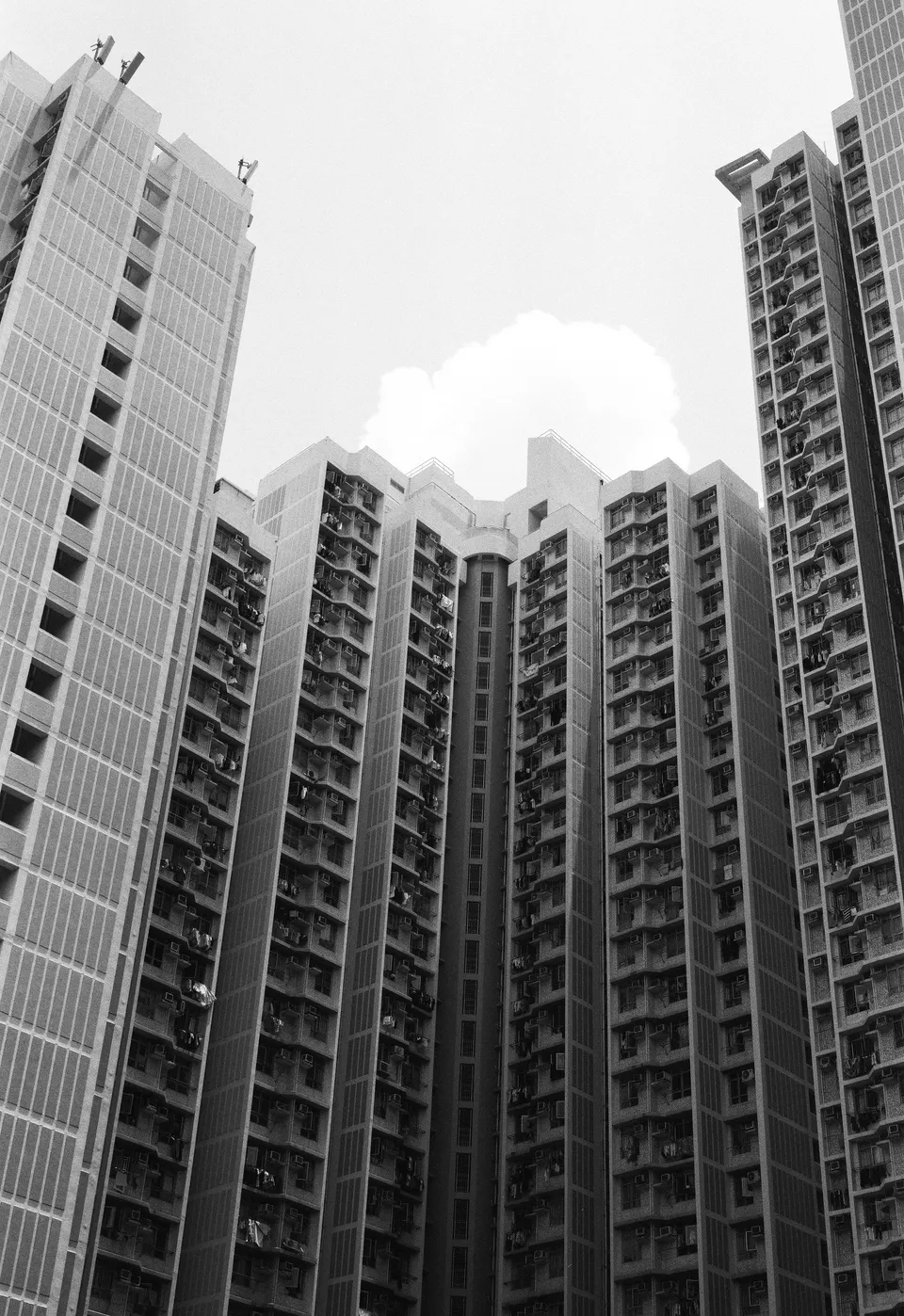
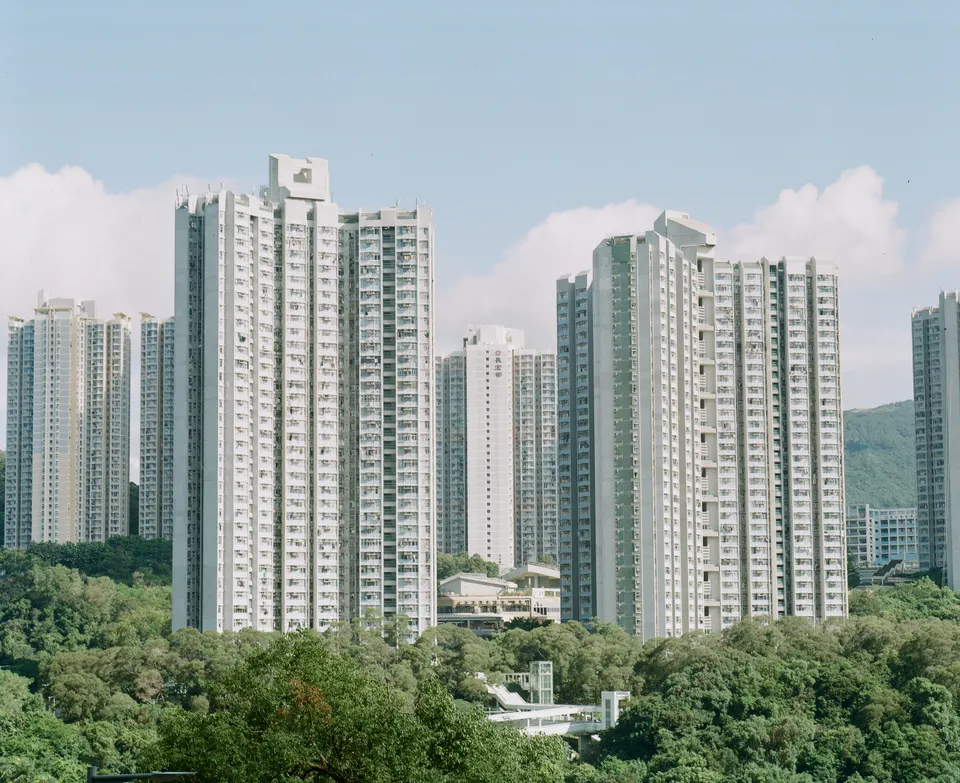
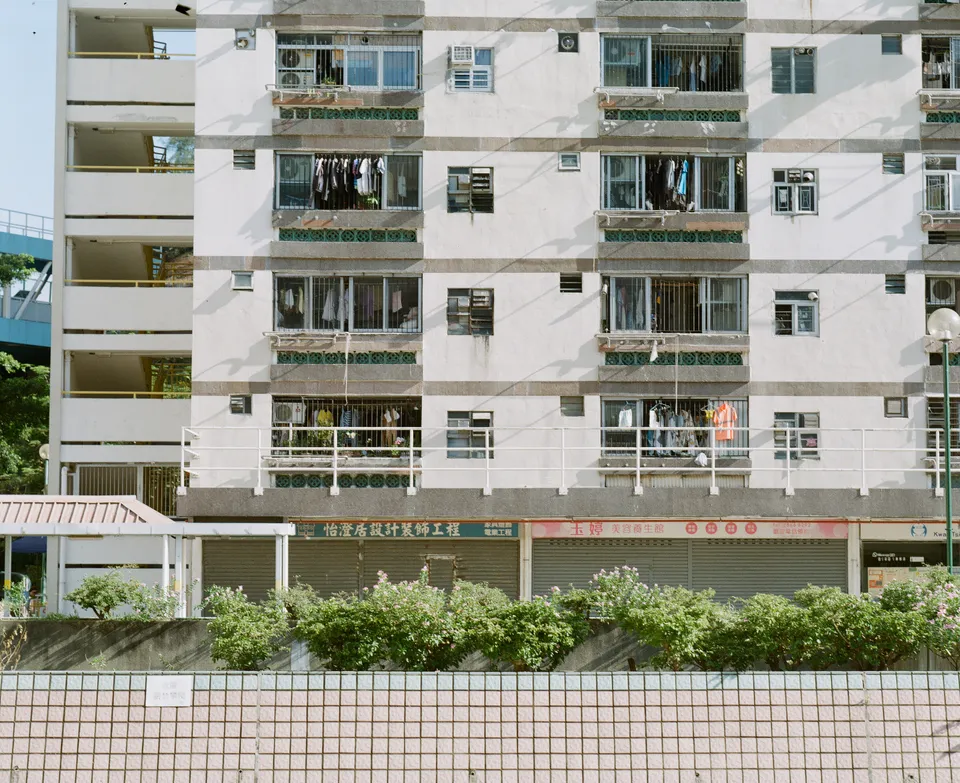
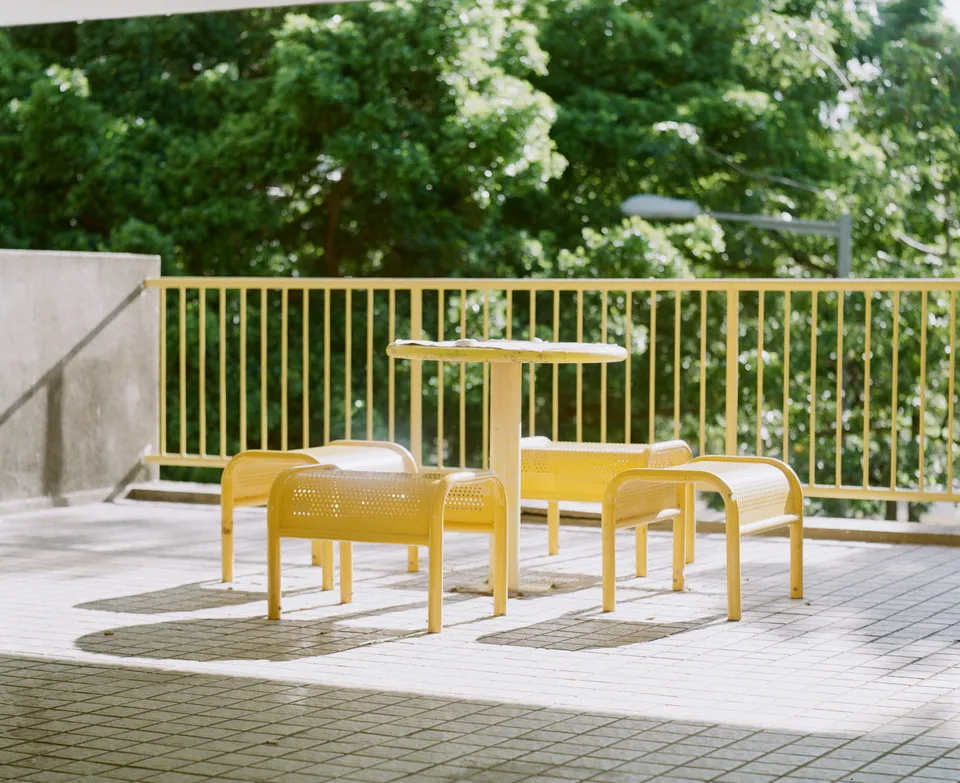
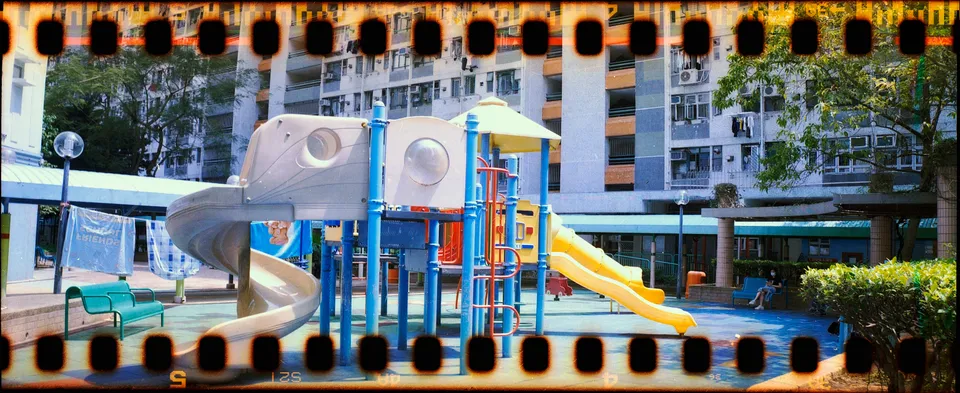

Compared to the more popular medium format cameras like Mamiya RB67 or Pentax 67, It saddens me that Mamiya Press obviously lacks the respect and love that it deserves. Even for me when I first began using Mamiya Press Super 23, it felt like something that only its creators will love. Later, when I found MATIA's Mamiya Press Fan Club and chang chia-che's video about Super 23, I began reconsidering whether Mamiya Press deserves more love. Of course it does.
Even though film has given way to digital as the mainstream photographic medium, there's been a revival on film and the best you can get for film photography has all been created in the 20th century and early 21th century. Plastic, toy cameras created nowadays are nothing more than cash grabs trying to ride the wave of film photography revival yet they are simply wasting precious film on low-quality plastic lenses.
To enjoy film photography I believe cameras from the past deserve to be revived or at least be returend to circulation at a reasonable price not affected by the fads created by celebrities using film camera and artificially magnified by the 2nd hand camera market. While I wish this art remain a secret amongst those who are already into it so as to keep film and equipment price low, I also wish people to actually develop a love and respect to this art, in the way that these photographers such as MATIA of an older generation did.
Like how MATIA coined the not-very-popular 中判写真週間 (Medium Format Week) on 6/4-6/9 every year which inspired me to shoot medium format film in all sizes that I could. Even though this is not a popular event, I am pretty sure MATIA him/her-self is very happy about this, and that's probably good enough. Bonus point if that goes on to inspire others.
I recognize myself with those in the older generation where I can feel more love towards photography and cameras themselves, versus the need for recognition that plagues our times. This generation buys film cameras to get that film look so they can get more "likes" or whatever from social media. To which end there're only 2 things left: ads and likes that survived no more than the instant where people scroll through the endless feed…
I wish to see the community embrace and revive the long forgotten and mistreated cameras like Mamiya Press. Mamiya Press is accessible and affordable because it was never part of and popular movement, as opposed to the poor Mamiya 7 (you know, Ken Rockwell did this…). Paradoxically, by spreading more love towards a particular camera it is only going to exacerbate the issue.
Therefore, it's probably a good thing to keep it low-key and share the love only among my peers and fellow photography/ camera lovers, even if that means some old cameras that could have been fixed ended up in the bin.

By the way this GOODMAN ZONE Mamiya Press made by Dora Goodman, shouts huge love towards the lenses in the Mamiya Press system.
